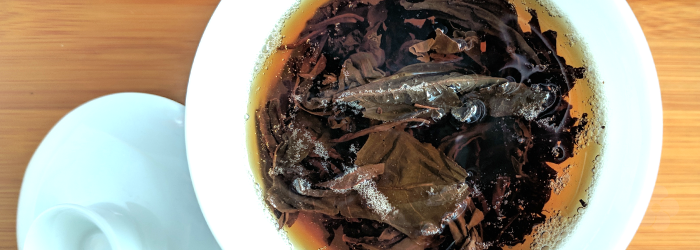What are Tannins in Tea?

Tannins are commonly discussed in the context of tea tasting, but usually poorly understood. Cited as a source of bitterness and astringency, their presence is often considered a sign of low quality tea, but their role is a bit more complex than that. As a natural part of every tea plant, tannins contribute to the growth process and health benefits of all teas, as well as the color and flavor.
Tannins, named for their use in tanning leather, are substances found in many plants that help regulate growth and serve as a natural pest repellent. They are brown or yellow in color, and lend bitter and astringent flavors in many beverages made from plant matter, including wine, beer, and tea. Tannins are also a type of polyphenol, in the same category as highly lauded catechins like EGCG, making them an important player in the health benefits of tea (and wine).
In tea, tannins are often called tannic acid, but this is a misnomer; tannic acid is a commercial form synthesized for use in historical medicine and modern industrial processes. While all teas contain tannins, they do not contain tannic acid.
The Taste of Tannin
As mentioned, tannins are generally bitter in flavor and cause a dry feeling in the mouth. This astringency is the dominant flavor contribution of tannins. While often considered undesirable, astringency actually contributes to the hui gan or lingering finish of a tea, making tannins a necessary part of the flavor profile in a good tea.
Tannins also cause darker colors in tea, which can be perceived as a sign of flavor strength. In fact, the development of tannins is unrelated to that of the aromatic compounds that create variety in tea flavor. A brewed tea that is exceptionally dark in color is typically a sign of tannic bitterness, not strength of flavor.
Tannin content in the cup is relatively easy to control by managing water temperature and steeping time, because tannins are extracted more slowly than other flavor molecules. However, the chopped or crushed leaves commonly found in tea bags are more likely to become bitter or astringent when brewing, because the increased surface area of the leaves allows for quicker extraction of tannins.
Which Teas Have The Most Tannins?
The tea plant produces tannins in the stem to help regulate growth, and in the leaf to help defend against pests. Thus, the most tannins are produced in teas that grow quickly, in areas prone to pests. This includes teas harvested in the summer, as well as teas grown at latitudes near the equator. Teas grown at high elevations may prove exceptions to this rule, as lower temperatures slow growth rates and reduce the number of pests.
Want to find out which teas have the least tannins? Check out our list of teas that are naturally sweet!
Sign up for our newsletter to get blog updates in your inbox!






Comments on this post (0)